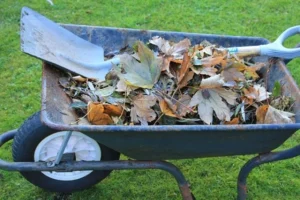Growing fresh lettuce at home is one of those little joys that feels oddly luxurious—especially when it’s happening on a narrow balcony in the middle of the city.
But if you’ve already set up your vertical system and still feel like your lettuce isn’t quite thriving, you’re not alone.
This article isn’t about buying new equipment or redesigning your setup. It’s about small, consistent tweaks that help you get more from what you already have.
We’ll cover things like lighting tricks, smarter watering habits, airflow hacks, and even how you harvest—all tailored to tight balcony frames.
If your greens look tired or growth seems slow, the fix might be easier than you think. Let’s walk through the routine changes that actually make a difference.
Know Your Balcony Microclimate
Your balcony might seem small and predictable, but it has its own unique microclimate—and it’s more important than most people think when growing lettuce.
Depending on the time of day, wind direction, and building orientation, one side of your balcony might be cooler, windier, or sunnier than another. Lettuce responds quickly to those shifts.
Why It Matters
Lettuce prefers cooler temperatures, indirect light, and steady airflow. Too much sun and your leaves might wilt. Too little air movement and you risk mold or leggy growth. Learning how your balcony behaves throughout the day is step one to better results.
Start by observing three key factors over a few days:
- Sunlight hours: When does your frame get the most light?
- Air movement: Are breezes blocked or funneled in specific areas?
- Temperature swings: Does one corner heat up more than others?
Simple Tweaks That Help
- Relocate your frame just a foot or two if needed—to avoid hot spots or catch more indirect light.
- Add shade cloth or mesh during high-heat hours if sun hits too hard.
- If airflow is poor, remove clutter or shift plants slightly to allow better circulation.
You don’t need instruments to get this right—just awareness and small adjustments. Once you understand how your balcony behaves, you can place your frame in the sweet spot for lettuce growth without changing your system at all.
Daily Light Checks & Adjustments
Light is one of the easiest things to overlook—especially when your system is already running. But for lettuce, it’s also one of the biggest factors in how well (or poorly) it grows.
In tight balcony frames, light can vary drastically from day to day. A neighbor’s laundry, a shift in sun angle, or even cloudy weather can throw things off more than you’d expect.
Lettuce Loves Balance
Too much direct light? You’ll see scorched or curling edges.
Too little? Lettuce stretches and turns pale, chasing the light.
Since balconies often create narrow light corridors, aim for soft, consistent exposure rather than full sun blasts.
Easy Ways to Adjust
A few small habits can make a big difference:
- Rotate your frame once a week so all sides get light evenly.
- Use a white backdrop (like a foam board or painted wall) to bounce more light toward shaded sections.
- Add a simple sun map using your phone—just snap pics at different times of the day to track patterns.
Don’t Overcomplicate It
You don’t need to invest in grow lights or fancy reflectors—just knowing where light lands and adjusting slightly over time helps keep your leaves strong and compact.
Paying attention for just five minutes each day gives you the data you need. And the results? Faster growth, better color, and stronger lettuce, without changing your system at all.
Smart Watering Schedules That Prevent Leaf Stress
Watering seems automatic in most systems—but in a tight frame, small oversights can cause major problems. Lettuce is sensitive to stress, especially from inconsistent hydration.
Even if your system has a timer, your role isn’t completely hands-off. Simple habits make the difference between lush greens and droopy, bitter leaves.
Why Consistency Beats Frequency
Lettuce likes things steady.
Big fluctuations—like dry roots one day and oversaturation the next—can lead to wilting, leaf curl, or nutrient lockout.
And in a balcony setup, heat and airflow can affect how quickly your water evaporates. What worked last week may not work this week.
Low-Effort, High-Impact Tips
- Check your reservoir every 2–3 days. Look for changes in water clarity, color, or smell.
- Set a recurring phone reminder to nudge you on water-check days.
- In hot weather, use cooler water (but not ice cold)—it helps stabilize root temperatures.
- Add a moisture indicator strip near the roots to get a visual cue, especially in tight spaces.
Optional But Effective
Keep a small notebook or app log of changes—just a few words noting water top-ups, weather shifts, or plant reactions. Over time, patterns will emerge that help you fine-tune without guessing.
You don’t need to micromanage. Just build in simple check-ins, and your lettuce will reward you with healthier, more reliable growth—even during hot weeks or sudden weather swings.
Quick Nutrient Balance Habits
When it comes to nutrients, it’s easy to feel overwhelmed by numbers and formulas. But for balcony lettuce growers, the key is spotting simple signs and keeping a steady routine.
You don’t need to be a chemist—just learn to recognize when your plants are sending subtle messages.
Watch for Common Signs
- Yellowing tips might mean a nutrient shortage.
- Slow or stunted growth can indicate imbalance.
- Leaf curling or spots could be a sign of pH issues.
Simple Habits to Stay on Track
- Pre-mix your nutrient solution once a week in a labeled jug. This keeps your refills consistent and saves time.
- Use a basic pH and EC meter every two weeks. Don’t stress about perfect numbers; just watch for big changes.
- Mark the results on a calendar or stick colorful notes on your reservoir—green for good, red for “needs attention.”
Keep a Plant Diary
Jot down what you see, when you add nutrients, and any changes you make. Photos help too. Over a few weeks, this habit turns guesswork into reliable adjustments.
Remember, your lettuce thrives on routine more than exact precision. These small, steady steps help keep your plants healthy and productive without complicated analysis or extra gear.
With time, you’ll find a rhythm that fits your schedule—and your balcony frame will thank you with fresh, vibrant leaves.
Airflow Boosters for Crisp Leaves
Most balcony growers focus on light and water—but airflow often gets left out. That’s a missed opportunity, especially for lettuce.
Without fresh, moving air, your plants can suffer. Mold develops, pests linger, and leaves grow soft or floppy. Good airflow keeps things clean, dry, and strong.
Why Air Movement Matters
Lettuce doesn’t like stale air.
When airflow is limited, moisture clings to leaves and encourages rot. That’s especially risky in compact balcony frames where plants are close together and air can’t circulate naturally.
It also impacts how nutrients move through the plant and how quickly it dries after watering.
Easy Airflow Fixes
You don’t need a big fan or any remodeling. Try these low-effort changes:
- Clip a small USB fan to the top or side of your frame. Aim for gentle circulation, not blasting wind.
- Open the balcony door or window 15–30 minutes a day—early morning and late afternoon work best.
- Clear clutter around the grow area. Give air a direct path to flow across the plants.
Mimic Nature With Micro-Movement
Even brushing the plants lightly every few days simulates wind. It encourages sturdier stems and discourages pests like aphids or fungus gnats from settling in.
This kind of interaction also helps you spot early problems. A glance while brushing may reveal a pest or leaf change you’d otherwise miss.
A little breeze goes a long way. Keep your lettuce crisp, dry, and thriving by letting the air do some of the work.
Harvest Smarter, Not Harder
One of the most satisfying parts of growing lettuce is the harvest. But waiting too long or taking too much can actually slow your system down.
The trick? Don’t aim for full heads. Focus on keeping your plants active, balanced, and constantly producing.
Go for “Cut-and-Come-Again”
Lettuce loves to regrow.
Instead of cutting the whole plant, snip just the outer leaves and let the center keep growing. This encourages more growth and stretches each plant’s productivity.
You’ll be surprised how quickly it bounces back.
Make Harvesting a Habit
Build it into your routine. Try this:
- Pick outer leaves every 5–7 days to stimulate continuous growth.
- Use clean scissors sprayed with diluted vinegar or alcohol to avoid transferring bacteria.
- Trim in the early morning when leaves are firm and cool.
This keeps your plants healthy and your harvests crisp.
Don’t Overharvest—Or Underharvest
Too much cutting weakens the plant. Too little, and old leaves start to rot or attract pests.
Aim for balance. Leave at least half the plant intact after each cut. If a plant is getting too tall or leggy, it’s time to harvest more heavily or restart that spot.
A Bonus Mindset Shift
Think of harvesting not as the end of a cycle, but as a form of plant maintenance. Light, regular trims help your lettuce thrive longer—and give you a steady stream of greens without the boom-and-bust harvest cycle.
It’s a small shift, but it changes everything.
Conclusion
You don’t need to overhaul your system to grow better lettuce—just a few smart, consistent tweaks can make all the difference.
From checking light patterns to improving airflow and harvesting more intentionally, these habits fit easily into your routine without adding complexity.
The beauty of a tight balcony frame is that it forces you to grow smarter, not bigger. That’s where real efficiency begins.
Focus on observation over automation. Adjust based on what your plants are showing you.
If you apply even two or three of these tips regularly, you’ll see stronger growth, better taste, and longer harvests—right from your balcony.
It’s not about working harder. It’s about letting your small system work with you.




